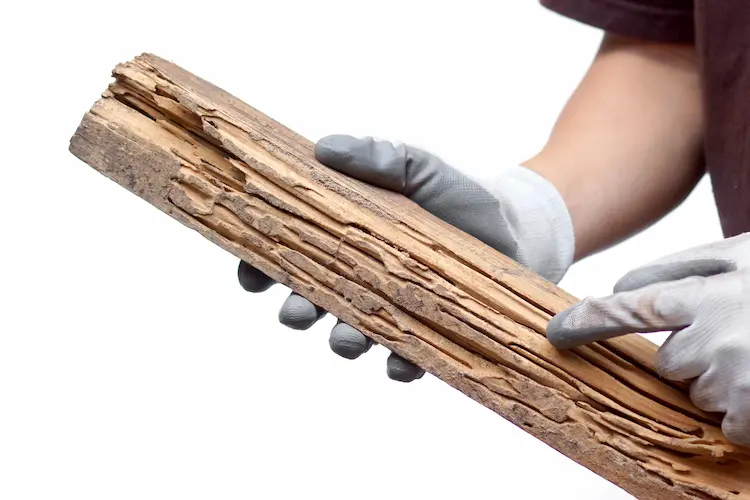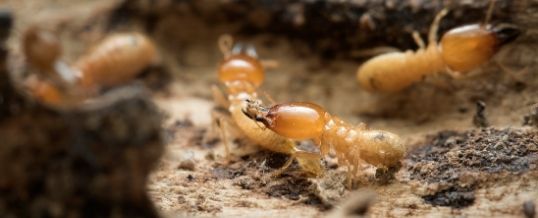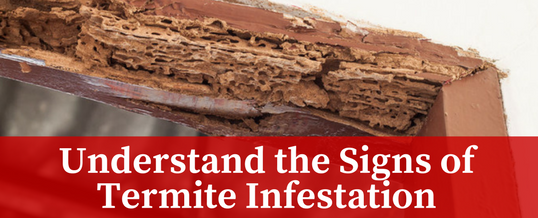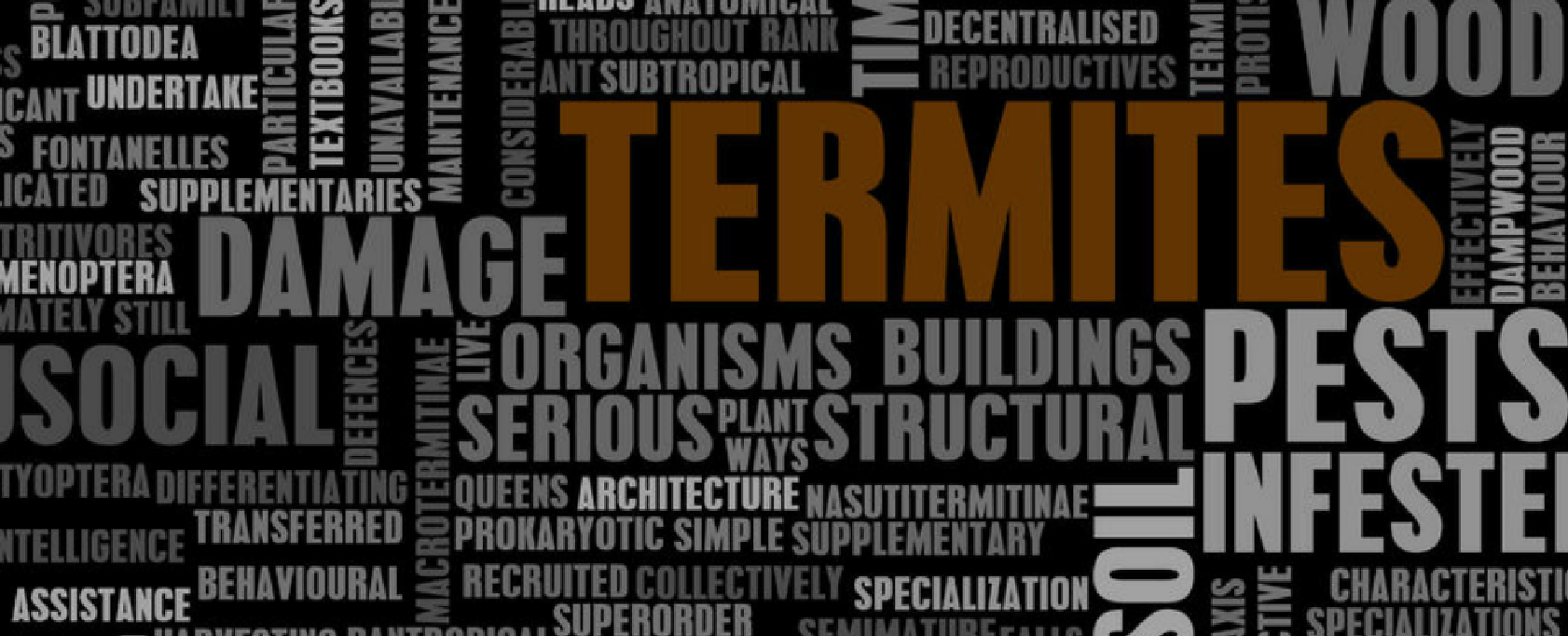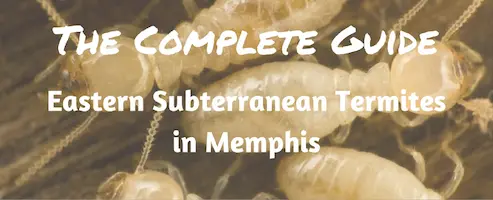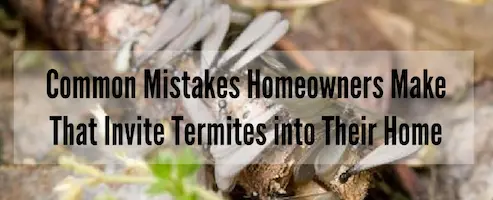As a homeowner there are few things as intimidating or as destructive as having termites in your home.
If you’re concerned about the possibility of these insects affecting your property, it’s important to be aware of the signs so you know what to look for before it’s too late.
Read on for some important information about these nasty pests so you’ll know when it’s time to start practicing some serious termite control.
Signs of Termites
Most people think of rotting wood when termites come to mind. However, there are several other signs that could be an indication these swarming pests have chosen to take up residence in your home.
First, look at your hardwood flooring carefully and be aware of any signs of blistering. Certain species of termites, namely subterranean termites, can cause serious damage to your subfloor. If the subfloor gets chewed up, you’ll start to see small blisters in the hardwood that looks similar to water damage or bubbling.
Another common sign of termites is hollowed or damaged wood behind and below your walls or floors. As termites chew through wood looking for cellulose, they leave long hollow tubes behind.
Eventually, these hollow tubes will cause the wood to weaken and can even become a threat to the home’s structural damage. Knock on wooden doors, floors, and trim and listen for an empty or hollow noise. Visually, the wood will look similar to a honeycomb, which means the termites have already done their damage.
If you think that you have swarms of termites nearby, you’ll notice small piles of discarded wings near doors and windows. When termites swarm out of their nests to start a new colony, they twist their wings off. Some flying ants also do this, so look for wings that are of the same size, which would indicate a termite swarm.
Mud Tubes and Dry Wood Mounds
Some species of termites make mud tubes that are approximately the size of a pencil. If you notice these tubs near a tree, shed, or another food source, it means that subterranean termites are likely underground. These insects like humidity and warm temperatures, so they build small tunnels to block the cool, dry air out.
Some termites nest inside of wood and kick their excrement out of the small holes they create. Since termites eat wood, you may notice small piles of dust around framing and molding. Tiny mounds of sawdust could be an indication that drywood termites are present.
Types of Termites in Memphis
While termites can be found all over the globe, these pesky, destructive pests tend to thrive in the warm, humid climate of the Southern United States. Everywhere from Virginia to Tennessee can be a breeding and feeding ground for termites.
If you’re concerned about termites in your Memphis home, it’s important to know more about which types choose to make this place their home. Swarming termites tend to be the most common type of termite that you’ll find in the Memphis area.
So, why do these pests want to live in Memphis? It’s mostly because this region experiences high levels of humidity and warm temperatures for longer durations of the year.
If you live in the Memphis area, be aware that these pests tend to emerge in the spring from around March to May, but there have been instances where they’ve been spotted as early as February. Some homeowners have even dealt with termites as late as June.
At the peak of the swarm season, termites will be more visible and will flock together in larger populations. Other types of termites in Memphis include the subterranean kind. These bugs love cool, dark places and will flock to stacks of firewood, mulch, or wooden structures like a deck.
Subterranean termites are the most destructive type of wood-eating insect that you’ll find in Memphis. Without the proper termite control in Memphis TN, you could end up with some serious structural damage.
Termite Swarms: What You Need to Know
Since swarming termites are one of the most common types found in the Memphis area, it’s crucial to know more about these invasive pests. If you see these insects swarming nearby, it’s a good indication that there’s a colony already living and feeding somewhere in your structure.
Most of the time, termites feed and build their homes out of the view of humans. If you don’t see a swarm near your property, that doesn’t necessarily mean that they aren’t lurking underneath the surface. However, visible swarms can be a great way to know for sure.
These insects swarm because they are part of a large colony that works together to feed on large structures. Some termites leave the colony to reproduce in order to keep the species going. The good news is that these insects won’t bite or sting you, however, they will do serious damage to your home.
If you notice the mud tunnels or tubes mentioned above, this is a serious indicator that there’s a swarm ready to launch. The termites will wait inside these tubes for the right conditions, then take off from the tunnels as they swarm into the air.
Once termites start to fly, it typically only lasts a few seconds since they’re not particularly known for being strong fliers. Instead, the termites will literally land, twist their wings off of their bodies, and start looking for a mate when they reach their destination.
Termite swarms are similar to bees in that they have a queen that “leads” their newly developed colony. If you see a termite swarm inside your home, the insects may not survive since they won’t have quick access to soil. Many termites die within a few hours due to dehydration if they can’t get to their colony or access some moist dirt.
More Termite Facts
Here are some more facts about termites that live in the Memphis area:
- Swarms may consist of just a few insects or they can be as large as thousands, depending on the species.
- Dense swarms and large colonies can actually consist of millions of termites.
- If a swarm gets too large, the colony will break up into multiple separate colonies.
- Subterranean termites swarm during the daytime, and they’re most prevalent in spring.
- Drywood termites swarm in late summer to early fall and are much less common in Memphis.
- All termites need very specific conditions in order to thrive. You may see them swarm after a rainstorm or when it’s overcast outside if winds are less than 6 miles per hour.
Termites and Damage
While the termites in Memphis tend to peak during specific times of the year, the damage can be long-lasting and continue throughout the year. Some members of a termite colony may hide and eat wood all year long, even if you can’t see them.
Anything that contains cellulose provides termites with the fuel they need to keep going. This food source is given to the insect’s nestmates to provide nourishment that keeps the colony alive.
Over time, this constant chewing and feeding will create serious damage to the wooden components of a home or business. If the issue isn’t addressed quickly, it can cost thousands of dollars to mitigate and repair.
If you have termites in your business, the costs can be even higher. Your entire business operation may be interrupted while you wait for treatment to take effect. The presence of termites can also affect your reputation as a business, even though it’s not your fault they’ve chosen to invade your building.
It’s important to know the difference between water damage and termite damage. Swollen floors and ceilings and buckling wood are indicators that termites have already wreaked havoc on your home. Another common form of damage is when wood floors and baseboards start to crumble under the slightest bit of pressure.
Doors and windows may seem difficult to close or they could feel drafty. This can indicate that the termites have chewed up the wood framing around these openings which causes them to become compromised.
Termites will even eat through material like wallpaper and drywall. Look for tiny holes, bubbling or peeling paint, and signs of faint lines on your drywall. These signs could indicate the presence of termites lurking inside your home.
Mild damage to walls or trim is fairly easy to repair. However, if the colony has thrived so long that there is structural damage present, the costs can skyrocket. That’s why it’s so important to make sure you know that the average termite control cost is much less than the cost to fix the problem after it’s too late.
Termite Control Tips
If you know that there are termites in or around your home, it’s crucial to find reliable termite control companies near me as soon as possible. However, there are some things you can do to prevent or at least mitigate the issue of having a termite infestation in your home.
First, move any stacks of firewood as far away from your home as possible. Firewood should be stored at least 20 feet or more away from your home, shed, or garage. Get rid of dead limbs and trimmed tree branches, since termites love to feast on dead wood.
Any spare cardboard boxes or small woodpiles should be removed from around the perimeter of your home. Since termites love moisture and humidity, you should also remove standing water from your porch, deck, or roof. A dry, wood-free exterior is one of the easiest and most effective ways to keep termites at bay.
While termites love wood, they’ve also been known to chew on swimming pool liners, foam insulation, and even your pool’s filtration system. That’s why it’s crucial to enlist the help of a professional termite control company to ensure that you’re protecting your investment.
Keep Moisture to a Minimum
Seal gaps around your gas line and water pipes to block termites from getting inside your home. You should also seal the small holes around water lines under sinks and behind toilets to cut off the insects’ point of entry.
If your home has wooden siding, make sure it’s six inches above the ground or higher if possible. Seek out cellulose-free mulch alternatives for gardens and landscaping. Divert water away from your home using your gutters and downspouts.
Check your basement for any signs of standing water and fix leaky plumbing and gutters. The drier you keep your home, the less appealing it will be to these pesky, invasive pests.
Avoid overwatering your plants and lawn, and keep mulch to a minimum, especially when it’s close to your home. A good termite control strategy combined with our professional service can help to keep your home safe and termite-free.
Keep checking the perimeter, walls, floors, and windows of your home and monitor them for signs of damage. The sooner you recognize that termites are present, the easier it will be to get rid of them.
Enjoy a Pest-Free Home
Although termites pose a serious threat to homes and property, you can keep them at bay with the right termite control methods. Start by protecting your home from moisture, and keep all wood or cellulose-containing items far away from your house.
Learn about the common species of termites that live in Memphis, TN, so you know what type of behavior to look for. Once you understand how termites thrive, it will be easier to stay proactive so you have peace of mind.
If you need termite control in Memphis TN or the surrounding areas, be sure to contact us today for more information and to find out how we can help.

